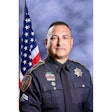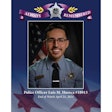A suspect is arrested and Mirandized. He invokes and makes no statement. Under what circumstances may you later seek a waiver and an admissible statement on the same or a different case? The answers are found in a series of U.S. Supreme Court decisions, including the 2010 ruling in Maryland v. Shatzer, which makes two significant changes.
Michigan v. Mosley
Richard Mosley was arrested in Detroit for robberies. When he was given the Miranda advisement, he said he would not talk about the robberies. He did not request counsel. No questioning took place. Two hours later, a homicide detective told Mosley he wanted to talk about the death of Leroy Williams. After a new round of warnings, Mosley waived and made incriminating statements about the murder.
The Supreme Court held that the homicide statement was admissible. Mosley's invocation of silence as to the robberies had been "scrupulously honored," so his subsequent waiver on a different case was valid. The court rejected the idea that an invocation of silence should result in "permanent immunity from interrogation" on other cases.
- Under the Mosley rule, a suspect who has invoked only his right to silence can be re-approached to seek a waiver on a different case.
Edwards v. Arizona
Robert Edwards was arrested for murder and other charges. When he was Mirandized, he first agreed to talk and then later said that he wanted an attorney. Questioning stopped, and Edwards was returned to his cell. The next day, different investigators gave Edwards another Miranda warning. Edwards waived and made incriminating statements.
This time, the Supreme Court ordered the statements suppressed. The court said that an invocation of counsel is different from an invocation of silence. Once the custodial suspect asks for a lawyer, any further police-initiated questioning by any officers cannot produce an admissible statement.
- Under the Edwards rule, a suspect who has invoked his right to counsel cannot be re-approached by the same or different officers to seek a waiver for an admissible
statement.
Arizona v. Roberson
After Ronald Roberson was arrested for burglary and Mirandized, he said he wanted a lawyer. No questions were asked about that burglary. Three days later, a different officer (who was unaware of the prior invocation of counsel) Mirandized Roberson about a different burglary, and obtained a waiver and a statement on that case.
The Supreme Court suppressed. The court said that before commencing an interrogation, law enforcement officials are obliged to learn about previous invocations of counsel during earlier attempts to interrogate the prisoner.
- The Edwards rule applies to all officers and all cases-not just to the case on which the suspect invoked the right to counsel.
Minnick v. Mississippi
The FBI captured Robert Minnick in California after his escape and interstate flight from a Mississippi jail. Upon being Mirandized, Minnick asserted his right to counsel and an attorney was appointed. Minnick met with his attorney several times over the next three days before Mississippi officers arrived to question him about murders he committed after escaping. He waived and made statements.
The Supreme Court suppressed. The court said that merely having an attorney appointed on one matter does not satisfy the Edwards requirement that after a suspect's invocation of counsel, the attorney must be physically present during any subsequent police-initiated questioning on any case.
- The Edwards rule applies even after counsel is appointed, requiring that after invocation of counsel, the attorney must be present during custodial interrogation by any officers, on any case.
Maryland v. Shatzer
Edwards, Roberson, and Minnick all involved suspects who had been held in continuous custody between the initial invocation of counsel and the subsequent interrogation. These cases also involved police-initiated interrogation. In Oregon v. Bradshaw, the court held that a suspect who has invoked either of his Miranda rights can always change his mind and initiate discussions with police; following a waiver, questioning can then proceed.
In another case (McNeil v. Wisconsin), the court suggested that the Edwards rule would only apply if the suspect remained in continuous custody following his request for counsel. The implication was that a release from custody would cut off the Edwards rule, and future interrogation might be possible. The court recently examined this issue.
Michael Blaine Shatzer was already serving a prison term for one child molestation conviction when a Maryland officer went to the Hagerstown prison to question him about another molestation case. Shatzer responded to a Miranda warning by declining to speak without an attorney, so questioning ended. More than two years later, another officer visited Shatzer, who was still a state prisoner, and obtained both a waiver and an incriminating statement. Shatzer was then put on trial in the second case, and he moved to suppress his statements on Edwards grounds. The Maryland appellate court suppressed the statements, ruling that since Shatzer had remained in continuous custody after having invoked his Miranda right to counsel, his statements were inadmissible under Edwards.
On appeal, the U.S. Supreme Court reversed. The court majority held that there was no justification for making application of the Edwards rule "eternal," or for giving the suspect immunity from questioning for some indefinite period of time following an invocation of counsel. Instead, the court arbitrarily settled on a new rule that if a suspect has been released from custody for at least 14 days before re-interrogation is attempted, a prior invocation of counsel does not prevent obtaining a valid waiver and an admissible statement, whether on the same case or a different one.
But was Shatzer "released from custody" during the two-and-a-half years between his initial invocation of counsel and the second interrogation session? Certainly, he had not been released from prison, so in that sense he was still in custody. But the court took account of the underlying rationale of Miranda-that the compulsive nature of police custodial interrogation is partly a result of the suspect's sudden loss of freedom upon arrest, and his confronting the unfamiliar surroundings of the police interrogation room while being questioned. This rationale did not apply, said the court, when a sentenced prisoner has become accustomed to life in prison:
"We think lawful imprisonment imposed upon conviction of a crime does not create the coercive pressures identified in Miranda. Interrogated suspects who have previously been convicted of crime live in prison. When they are released back into the general prison population, they return to their accustomed surroundings and daily routine." (Maryland v.
Shatzer)
The court suggested that warnings and waivers must precede prisoner questioning not conducted in an area routinely accessible to the prisoner: "When the prisoner is removed from the general prison population and taken to a separate location for questioning," he loses the familiarity and comfort of his habitual surroundings, and Miranda would apply.
Unanswered Questions
The Shatzer decision does not address the jailhouse questioning of pretrial detainees, but only convicted prisoners. Nor does the decision discuss non-custodial interrogation that might occur less than 14 days after release from custody following an invocation of counsel. How the court may view such issues must await future decisions.
Devallis Rutledge is a former police officer and veteran prosecutor who currently serves as Special Counsel to the Los Angeles County District Attorney. He is the author of 12 books, including "Investigative Constitutional Law."
















